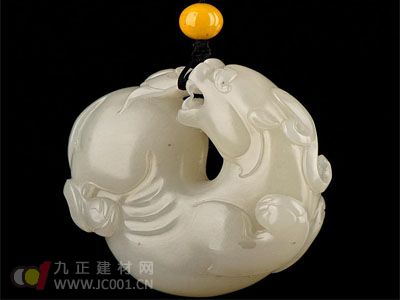Jade knowledge
Imagine holding a piece of jade in front of you. At first glance, it might not seem special—raw jade often looks similar to ordinary stones or pebbles. This was the case for the ancient Chu people, who were so devoted to jade that they risked their lives to protect it. Many suffered unjustly, even facing punishment for pretending to possess fine jade when they didn’t. The formation of jade is not very different from that of common stones or iron ore, but its mining and processing are unique. This is due to the diverse natural forms of jade deposits, which make extraction and refinement more complex than for other minerals. What makes a piece of jade truly valuable? This question doesn't have a simple answer, as the concept of jade is broad and deeply rooted in culture. According to Xu Shen, “Jade is a beautiful stone.†In general, any naturally occurring mineral that can be polished into a smooth, bright, and durable material with stable chemical properties can be considered jade. In everyday language, we often refer to two main types of jade: nephrite and jadeite. Nephrite includes stones like white jade, sapphire, jasper, and topaz, while jadeite refers to the emerald-like gemstone from Myanmar. Diamonds, rubies, amethysts, and quartz are typically classified as gemstones in a narrower sense. On the other hand, organic materials such as ivory, coral, and tortoiseshell are considered “organic gemstones.†Both soft and hard jade share similar quality standards—hard, compact texture and vibrant, appealing color. Jade culture is one of China’s most profound and intricate traditions, deeply embedded in its history and philosophy. It has been present throughout China's long history, from ancient times to modern days. The stories surrounding jade are rich, emotional, and sometimes tragic, making it an essential part of Chinese heritage. Many Chinese words include the character for jade, such as “yu†(玉), used to describe beauty, virtue, and excellence. Phrases like “jade girl,†“jade hand,†“jade face,†and “jade voice†reflect how deeply jade is woven into the language. Even in expressions related to sacrifice or hardship, like “jade for justice†or “jade chains,†the term is used metaphorically. Ancient literature is full of tales about jade—some heartwarming, others heartbreaking. While jade culture exists in other parts of the world, none have maintained such a deep and continuous connection over thousands of years. From the early Neolithic period to the modern era of technology and space exploration, jade has remained a central symbol in Chinese civilization. Its cultural depth, spiritual significance, and the way it has been personified and mystified make it truly unique. The earliest known jade artifacts in China date back to the Xiancheng Cave site in Liaoning Province, around 12,000 years ago. These were made from serpentine stone. Later, in sites like Hemudu in Zhejiang (over 7,000 years old) and Zhangze in Shanghai (about 5,000 years old), jade rings and pendants were found. In these early periods, jade was often mistaken for regular stones due to material scarcity and rough craftsmanship. It was only after the development of grinding techniques that people began to recognize certain stones as particularly beautiful and valuable, leading to their use in personal adornment. Some ancient people even placed jade in the mouths of the deceased, showing an early belief in its mystical power. For those who love jade, the biggest concern is encountering fakes. Counterfeit jade, often made from glass or other materials, is a common problem in the market. Identifying these imitations is usually straightforward. For example, glass fakes may have a slight bulge along the edges, visible to the naked eye or under magnification. They also tend to show bubbles when light reflects off them. Understanding the true value of jade requires both knowledge and appreciation. Whether you’re a collector, a historian, or simply a lover of beauty, the journey into the world of jade is as fascinating as it is rewarding. Mining &Tunnelling Cutting Pick Mining Machine Cutter Head,Coal Mining Machine Cutter Heads,Weir High Mining Pick,Hard Rock Cutting Machine Cutter Head Zhenjiang Weir Machinery Technology Co., Ltd , https://www.weircuttingpicks.com